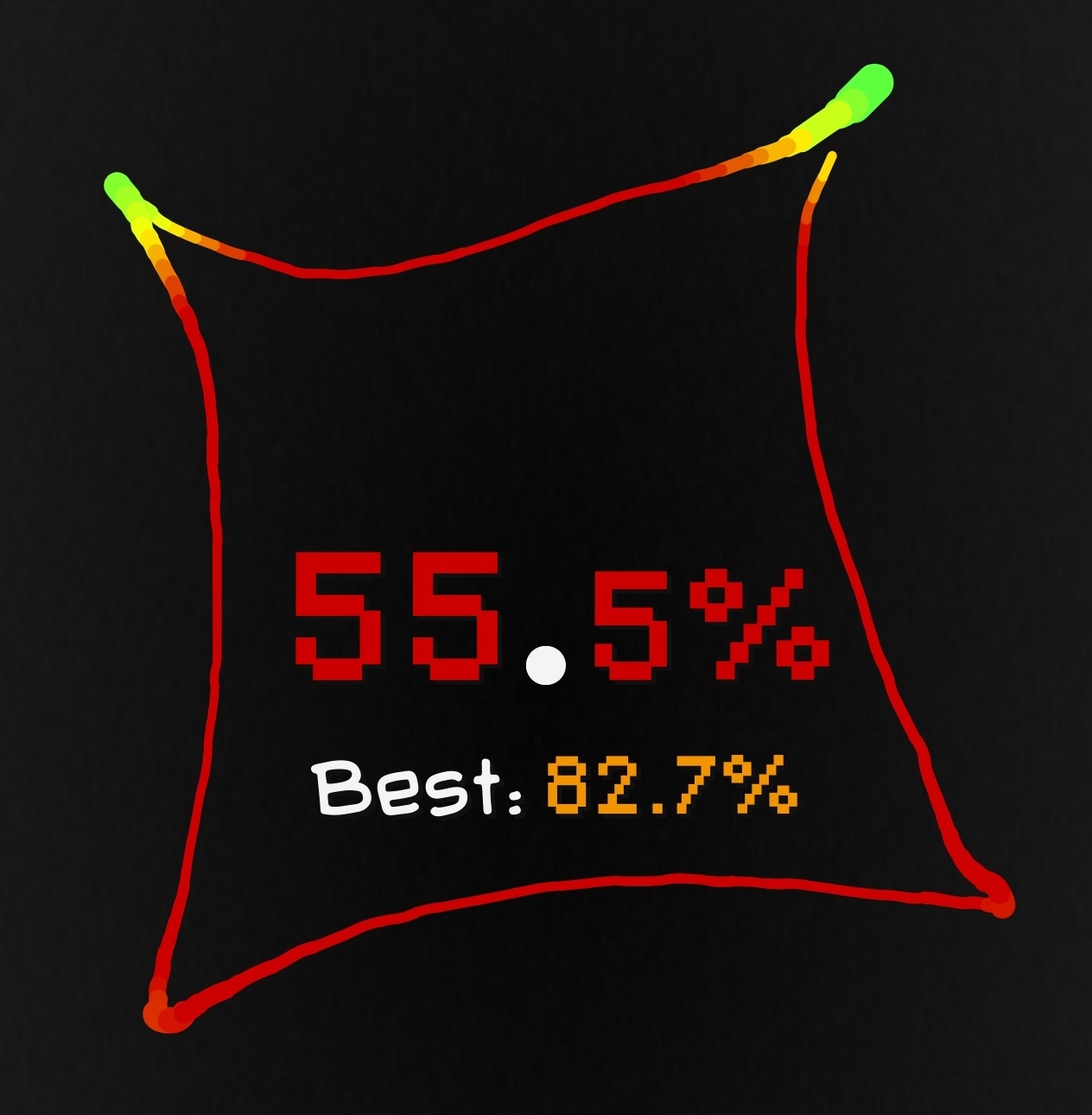

Open Camera is FOSS (GPLv3) and is available in both Google Play and F-Droid.


Open Camera is FOSS (GPLv3) and is available in both Google Play and F-Droid.
Hmm…

I have questions.

How low can you go?

- a few git repos (pushed and backup in the important stuff) with all docker compose, keys and such (the 5%)
Um, maybe I’m misunderstanding, but you’re storing keys in git repositories which are where…?
And remember, if you haven’t tested your backups then you don’t have backups!


It will take as long as it takes.


You jest but… delay line memory


Ah, I didn’t realize that was a limitation.
So here’s an article about packaging a 16-bit application with winevdm, an open source 16-bit emulator, into an MSIX which makes it installable and launchable as if it were a single application: Running 16-bit applications on Windows 10 64-bit.
Definitely a more complex process though.
I also suggest looking for the software on myabandonware.com because they collect community-built fixed versions of older applications, especially games. If anyone has made a fixed version for this game, it will probably be there.


Super basic, but have you already tried using the compatibility mode? If it runs in a Windows 98 VM it should theoretically work with compatibility mode set to Windows 98.
Native solutions are best, if they’re effective.
pics or it didn’t happen


Narrow scope.


Never use a spreadsheet to do a database job.
Unless you were playing Smash Brothers, then you could have 8.


[citations needed]
Get some sources, and stop drawing conclusions from no evidence.


They leveraged open source to compete on the console front without actually investing dev time.
This is just false.
Valve has funded a lot of extra work though to get things like DXVK and VKD3D-Proton for the translation from Direct3D to Vulkan into a state where performance can be really great! Valve also funds work on Linux graphics drivers, Linux kernel work and the list goes on.
The included improvements to Wine have been designed and funded by Valve, in a joint development effort with CodeWeavers. Here are some examples of what we’ve been working on together since 2016:
- vkd3d, the Direct3D 12 implementation based on Vulkan
- The OpenVR and Steamworks native API bridges
- Many wined3d performance and functionality fixes for Direct3D 9 and Direct3D 11
- Overhauled fullscreen and gamepad support
- The “esync” patchset, for multi-threaded performance improvements
Modifications to Wine are submitted upstream if they’re compatible with the goals and requirements of the larger Wine project; as a result, Wine users have been benefiting from parts of this work for over a year now. The rest is available as part of our source code repository for Proton and its modules.
In addition to that, we’ve been supporting the development of DXVK, the Direct3D 11 implementation based on Vulkan; the nature of this support includes:
- Employing the DXVK developer in our open-source graphics group since February 2018
- Providing direct support from our open-source graphics group to fix Mesa driver issues affecting DXVK, and provide prototype implementations of brand new Vulkan features to improve DXVK functionality
- Working with our partners over at Khronos, NVIDIA, Intel and AMD to coordinate Vulkan feature and driver support
from Valve’s original Proton announcement
You should try doing some research before making such claims. Valve has been directly cooperating with, contributing to, and financially supporting several open source projects related to gaming since at least 2016.


I’m guessing you don’t remember what the market was like for indie games before Steam. Valve’s platform has done a lot of work to expose small game developers, and made it economically viable to work on and publish games independently. Before this it was very difficult for small titles without the advertising budget of a AAA publisher to get any attention at all, let alone actual sales. There’s nothing else like Steam for small studios trying to find buyers for their games, and Valve does deserve credit for that because it’s improved the video game market overall to have more people making more games and able to earn a living doing it.
The other major effort that Valve has made is Linux compatibility. Even before their work on Proton, Valve released native Linux versions of their games (they were one of very few publishers to do so at the time). I’ve been gaming on Linux since 2006, and Wine was great but rarely easy or complete. Proton has made things so straightforward that people have forgotten just how difficult it was before.
Credit where it’s due. No other major publisher has contributed to the gaming community the way Valve has, except maybe id Software when they just handed the entire Quake 3 Arena source code to the open source community in 2005 which spawned countless new open source game projects.
Downvote me you bootlickers.
No, you’ll enjoy the attention too much.


A long wire is an antenna that will gather electromagnetic noise from the air and turn it into random signal on the line. Shorter wires will be less responsive and therefore less noisy, and you can also mitigate the problem by grounding everything properly. It’s also possible that with the wires in that parallel ribbon, they may induce crosstalk on each other. If you want to be really careful, you could replace that big ribbon cable with an STP cable and ground the shielding jacket.
Also, a noisy/low quality power input to the Pi will produce noise in its circuits and ultimately the output. If you can, supply the power from something better than a wall wart.


Your description makes belief sound like willful ignorance.
Maybe, maybe not. In the absence of evidence, belief may be harmless, though somewhat pointless in the sense of Hitchen’s razor:
What can be asserted without evidence can also be dismissed without evidence.
and Newton’s flaming laser sword:
That which cannot be settled by experiment is not worth debating.
It certainly becomes willful ignorance if the believer avoids and/or actively rejects contradictory evidence.
It sounds like the real challenge is knowing when you have enough information to convert your educated guess into full-blown knowledge
The educated guess (hypothesis) becomes knowledge when it can be demonstrated by direct experiment rather than inferred/constructed from related knowledge. Also it’s important that the educated guess be testable/disprovable somehow, at least in theory (Popper’s falsifiability principle):
Every genuine test of a theory is an attempt to falsify it, or refute it.
So, belief is benign when it exists in an untested/untestable area and the believer is not bound to the belief emotionally. Belief is malignant when it exists in a tested area or when the believer clings to the belief emotionally. Belief is either harmless or extremely damaging, but in either case of no practical value.


Solipsism is a dead-end of navel gazing.


Belief is seeing that the light is green even when it isn’t.
Knowledge is accepting that the light is red when it is.
Believing that the light is green will not help you when you get flattened by a truck. Knowing that the light is red will keep you from dying pointlessly.
Knowledge is the first step on the path to wisdom. Belief is delusion.
If you cannot demonstrate, or point to a demonstration, then all you can do is guess. You can make an educated guess based on other demonstrations, but if you cling to your guesswork as if it were demonstrated to be true, and you internalize your guesswork as part of your identity, and you refuse to let go of it when confronted with contradictory demonstrations, then you are a fool.
It doesn’t do computational photography, true - I don’t know of any open source mobile apps that can, it’s a very complicated subject.
It does allow switching between the various lenses, at least on my OnePlus 12r.